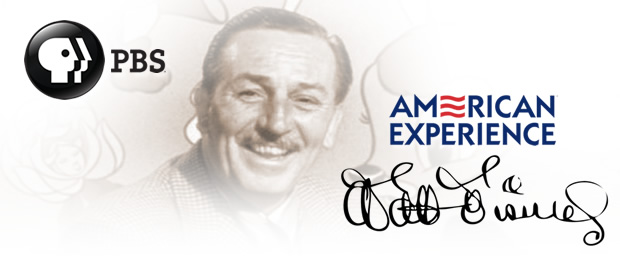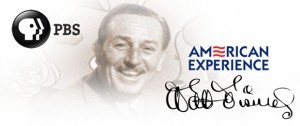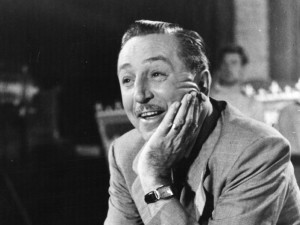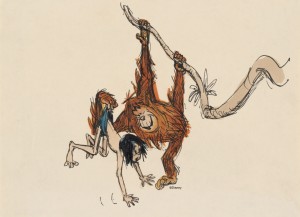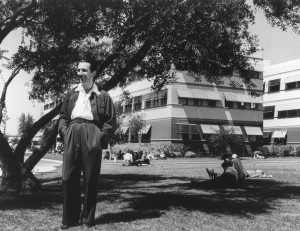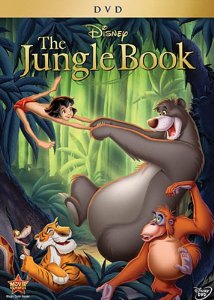Interview: Director Khoa Le of “Walt Before Mickey”
Posted on September 20, 2015 at 10:52 am
“Walt Before Mickey” is the story of Walt Disney’s earliest years in animation, filled with passion and imagination but also plagued by failures and setbacks. “American Pie’s” Thomas Ian Nicholas and “Napoleon Dynamite’s” Jon Heder play brothers Walt and Roy Disney. The film was made on a micro-budget with a first-time director, Khoa Le. It was a pleasure to speak to Le about the challenges of coming to this very ambitious project at the last minute and bringing it all together in a very short time frame.
“I got the call on Christmas Eve in 2013 and my friend asked me if I wanted to make my first feature film and I go, ‘Yes, sure. What is it about?’ And he goes, ‘Well it’s about Walt Disney.’ And I said, ‘Wait this is a Disney film?’ and he goes, ‘No it’s a film about Walt Disney,’ and I said, ‘Is it a documentary?’ And he goes, ‘No it’s narrative feature film. It hasn’t been fully casted yet and they’ve been going through some trouble.’ and I said, ‘So that’s the catch to my opportunity.’ Just like anything else, any first-time opportunity, you’re going to have to make some sacrifices. And at the time I was growing my business and we were in the baby stages of the business. And I had to make a decision if this was something that was going to propel the career or hurt my career or risk the opportunity of losing my business at the same time because I knew I would have to step away at least for a few months to make this project work. Instead I stepped away for almost a year because we had to go into post production and all that type of stuff to make this movie work for almost no money at all. But I’m glad that we did it with blood, sweat and tears and with so many issues that were presented on the set. And I think as a first-time feature it couldn’t have been more perfect, even with all the mistakes that we had, seeing how the production was pretty much a disaster coming on board because of another director had left. I always believed that you only succeed from the failures, you always learn from the failures, so if we never went through those failures then I’d have to learn all of this in my next feature production. Instead I get to learn it from here. So during the film I wanted to kill myself, I got sick, I had pink eye, it was a mess but I think it comes to show that no matter what the budget is as long as you have a strong mind and a set of people that’s willing to pull this forward then you can make any project as successful as it can be.”
The challenges made Le appreciate even more the challenges his main character, Walt Disney, went through in life and was going through in the film.
“When I came on board I didn’t know how many crew I was going to be managing, I didn’t know I had a crew of over 100 people. I thought it was a much smaller team but we had an experienced crew. We had costume designers that worked on Pirates of the Caribbean and people that worked on Fast And Furious as well. I was really intimidated because I’m probably the most inexperienced one out of that group but what I was much more experienced about was running an organization and growing a business because I just came off from winning Small Business of the Year For Fastest-Growing Business in Hudson County New Jersey and we were becoming this 1/2 million dollar organization and continue to much further growth. So I knew that if I go in there telling them, ‘Okay guys this is what we’re going to do,’ we’re going to have a problem, but if I going there even to inspire the crew and get them to believe in what I’m capable of without having to question me and then I return the same thing obviously we would be able to create a more manageable team and a more structured organization when we are making this movie.”
With a tiny budget and short schedule, shooting a period film with several different locations meant enormous challenges in the sets, cars, props, and costumes. Though the story takes place in the Midwest and California, most of it was shot in Florida.
“To start with, it took me 18 hours to get to Florida because of a snowstorm. From a micro budget standpoint, everything had to be shot on the medium-size, I couldn’t shoot anything wide because if you go into anything wider you might see a light pole or might see a construction site. Sound was a problem because you hear modern cars flying by, effects really tough to work with. We shot one part in Kansas City which is more period, but the producers are from Florida so that’s where they wanted to shoot. It’s their home town, they knew everybody over there so I guess it makes the most sense. But from the directing standpoint it was a nightmare because I would say, “Can I have this?” “No you can’t do that, you can’t do it right here.” “Can we lock down the street?” “No we don’t have the budget for this.” “Can I get at least two picture cars in the scenes? And I wanted a crane for the farm scene, but that was too much, too. And of course the producers are very inexperienced as well so we were learning together. If you’re making small changes on the day of whether you’re having another actor in or you’re taking another actor out or you change the shot just a little bit, I learned that it affects all the other departments. Costume has to change, make up has to be fixed, and it creates this craziness on the set.”
When he arrived, the script was not even ready. “The producer gave me the book to read and also I had two scripts to look at. One was a script that was 150 pages which is nowhere close to a shooting script, it was more of a draft but it had a lot of ideas and good elements in it. The shooting script didn’t have the strong element but could fit within that budget to make it work. But it was tough because both of them were not ready to be shot so when I got down there and this is before I met Frank Licari, he is actually my film partner now but at the time I didn’t know him. He is also the co-producer on the movie and also the additional writer on the movie. This guy was a phenomenal writer and I knew right then and there this guy is going to be my right hand through this process because for two weeks while over there I didn’t even get to set up anything that was for directing purposes, everything was trying to fix the script. And so by the time we got to the last week we didn’t have an actor to play Walt Disney until the last week of production. We didn’t even stop looking for locations the week before we had the shoot.”
He turned over as much as he could to the experienced crew members, telling the costume and prop people that “I’m going to leave it up to you guys to be very creative and I want to trust you because we have no time to debate on these things so at the end of the day I kind of set them free on any restrictions, no micromanagement, you can’t and that’s how we collaboratively made this happen.” He regrets missing the chance to film some of the scenes they could not get to, “with the details that I wanted to shoot to make the transitions and the cast more interesting just didn’t have any time or opportunity for that.” But “I’m still proud of the movie for sure. I think people are going to be surprised. I look at Walt Disney as more of an entrepreneur than just a creator. Every entrepreneur has a reason why they exist in the world. What is their cause and their belief to pull through. He could just as easily create animation and call it a small business forever and just do that but he didn’t. He wanted to create something that could change the world. He created something that could be iconic, and could create a legacy not for himself but for people that experienced what he created. So it’s about happiness at the end of the day. If you could create a world where it’s just pure happiness and nobody’s fighting, nobody is jealous of anything else or a place where you could come back to and could rekindle a family or save a marriage or help you raise a child, that’s a life worth living. And I think that’s what Walt Disney did. That’s why when you watch the movie, you watch it not only for the educational piece, but you are watching it for yourself. Because everyone goes through adversity, everyone goes through challenges; everyone goes through all these obstacles in order for you to achieve your dream. It doesn’t get handed to you on a silver plate at all and Walt Disney just like you and me, he is just a normal person like just you and me with a reason why he wanted to create all of this with a passion. That is more than just watching it, if you could realize that someone iconic that created a world that you live in of knowing what he did, in my opinion, that’s breathtaking.”

